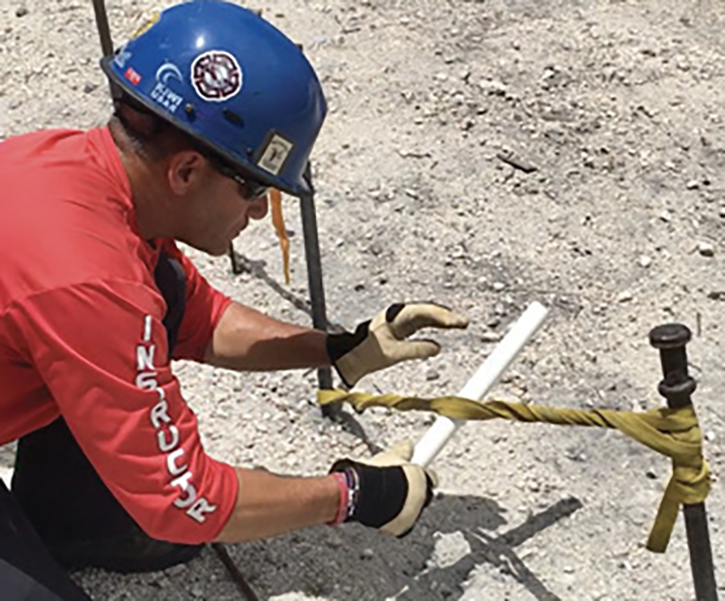
TRAINING NOTEBOOK ❘ By Jeremy Rifflard
A steel picket is an underutilized tool for fire rescue. Rescuers can quickly place a picket anchor to tie back a vehicle to keep it from shifting (photo 1). A picket anchor is easy to set up for lowering or raising personnel or equipment in low-angle terrain. Pickets can be used outside of a structure to tie off a search rope. Picket anchors are often used along rivers to anchor swiftwater ferrying systems. In structural collapse, pickets are used to prevent emergency shoring from shifting (photo 2). When staffing is an issue, pickets can be used to hold trench panels. This will free personnel for other tasks.
A steel picket is three to four feet in length and one inch in diameter. Minimal training is needed to become familiar with picket installation. Pickets can be used individually or in a series for a stronger anchor (photo 3).
RELATED FIREFIGHTER TRAINING
Prebuild Wood Shores for Efficiency
Stabilizing Tilt-Up Construction with the Double Insertion Point Raker Shore
Pickets usually have a pointed end aCutting Concrete Floorsnd a flattened end. They resemble a giant nail. Drive the pointed end into the ground by striking the flattened end with a sledgehammer or a flathead ax. Most injuries that occur with pickets happen when they are being driven into the ground. The sledgehammer grazes the flat end and continues downward, smashing into the hand of whoever is holding the picket. This can cause serious injury.
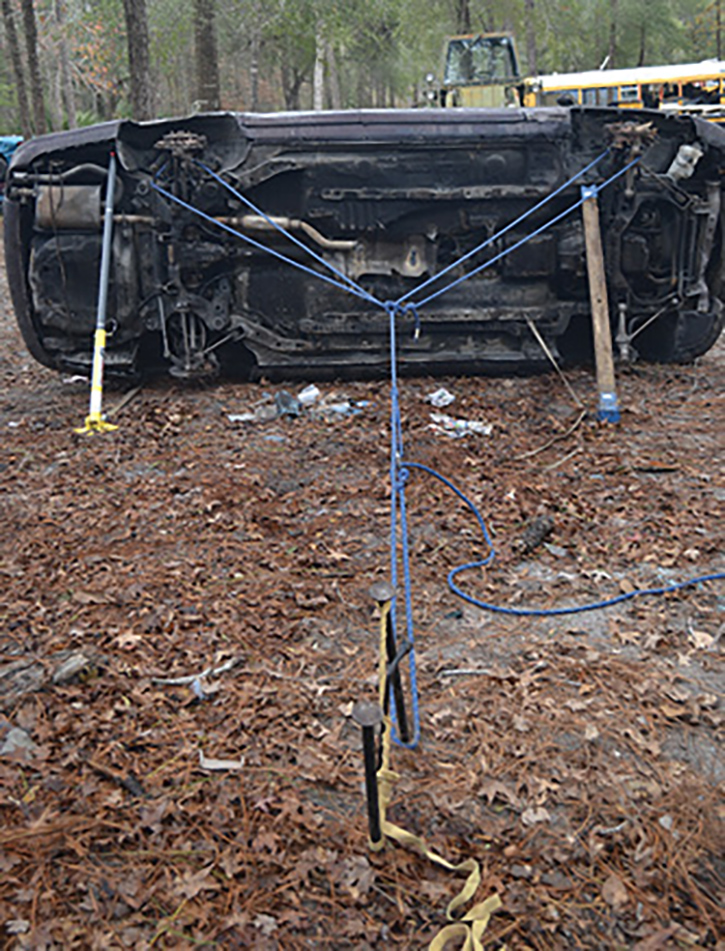
(1) Photo 1 courtesy of Daniel Jodoin; photos 2-11 by author.

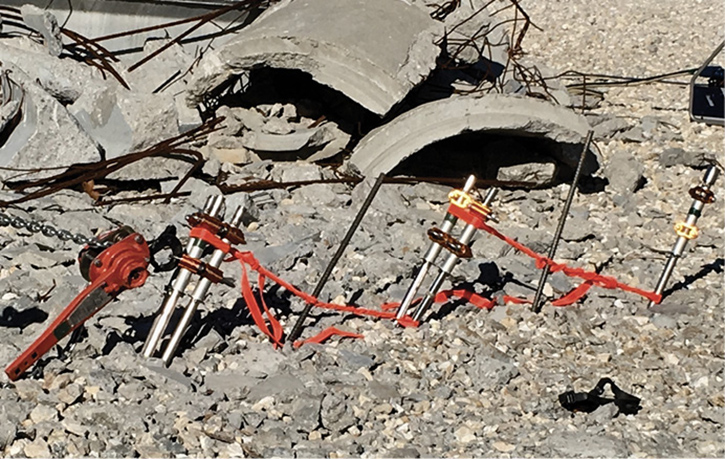
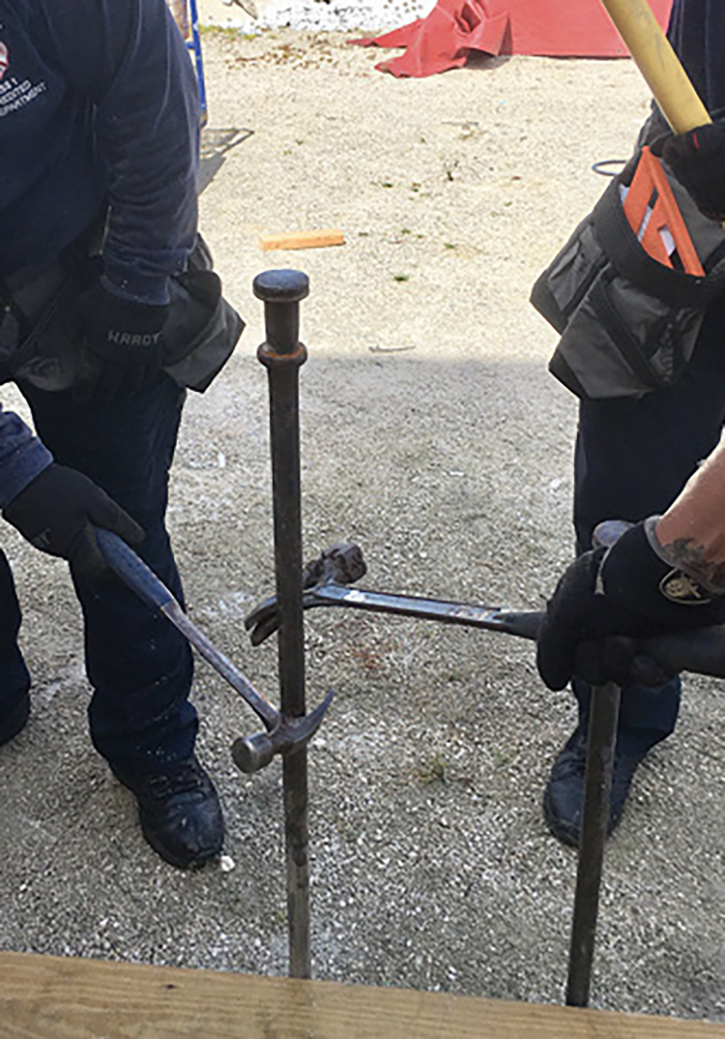
Two techniques to prevent hand injury are based on the same principle: Do not hold the picket with your hand. One technique is to use the claw end of two framing hammers on the picket (photo 4). The rescuers hold the hammer handle as normal. If the sledge misses the picket, it will strike the face of the hammers.
If you want to keep your hands at a greater distance, use a 10-foot-long webbing. At the center of the webbing, make a full round turn on the picket. Have rescuers hold the end of the webbing at opposing sides (photo 5). This will accomplish the same task while preventing injury.
Drive pickets into the ground two-thirds the length of the picket. An easy identifier for this length is to paint the picket a different color or add another type of marking at the two-thirds point.
When you drive the picket into the ground, it should have about a 15° lean opposite from the pulling force. The boot method is a quick way to estimate 15°. Place the pointed end perpendicular to the ground near the heel of your boot. Lean the top end of the picket so it is over the toe end of your boot. This angle is about 15° (photo 6).

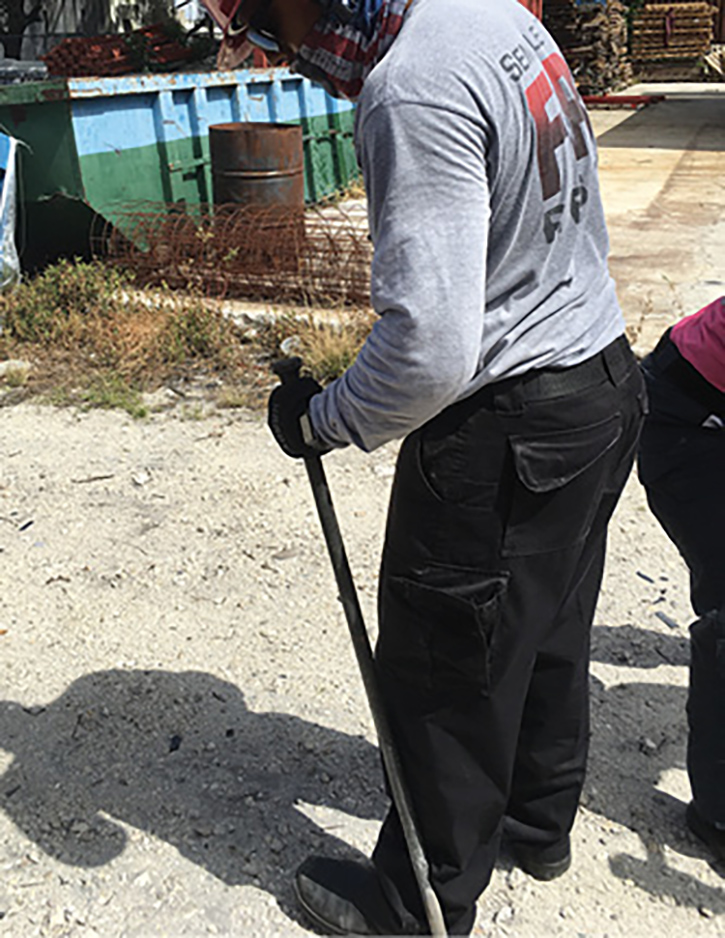
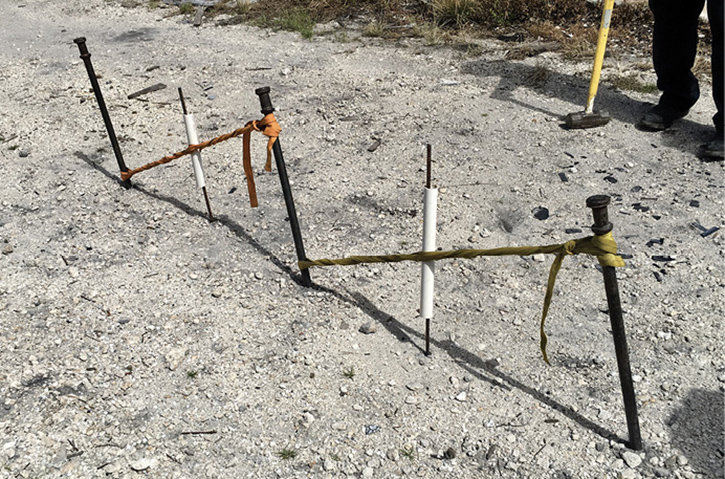


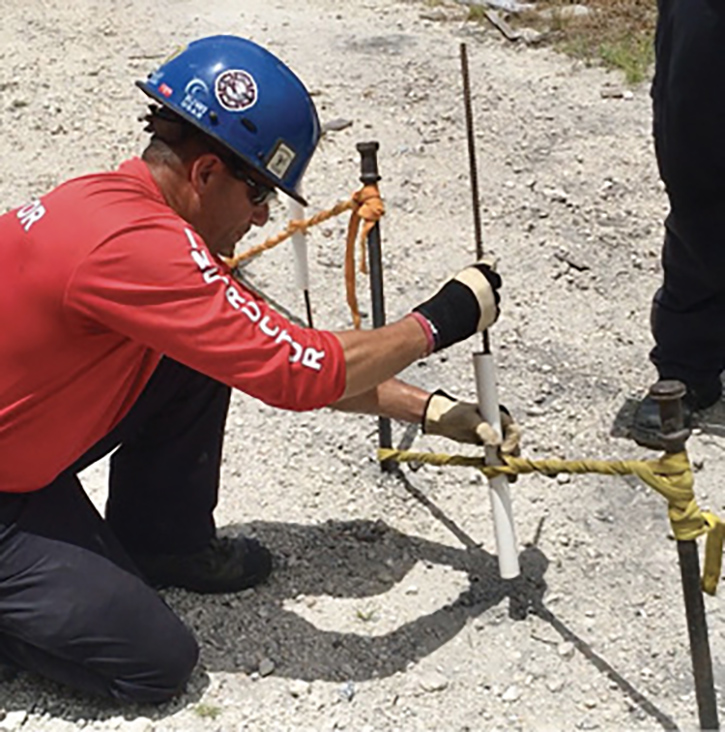

Depending on the type of soil, water saturation, whether the soil has been disturbed, and other factors, a single picket can hold between 300 and 700 pounds. For additional strength, rescuers can use two or three in a series. Based on various references, a series of one-to-one-to-one pickets could support weights between 1,000 and 2,000 pounds (photo 7). For additional strength, use a three-to-two-to-one system.
To create the one-to-one-to-one system, drive the first picket into the ground two-thirds of its length at a 15° angle away from the load. Lay the second picket on the ground. Install the second picket one picket length away from the first. Repeat this measurement to determine where you should install the third picket. Use a safe technique to drive all three pickets two-thirds of their length into the ground.
Use a 15-foot-long webbing to connect the top of the lead picket with the base of the next picket. Use a clove hitch on the lead picket and wrap until you cannot reach the following picket. Tie the excess of the web with a clove hitch. The webbing will be a little slack. In the center of the webbing, place an eight- to 16-inch length of one-inch polyvinylchloride (PVC) pipe. Spin the PVC to tension the webbing. When you reach the desired tightness, place a ½-inch-diameter rebar rod about 30 inches long in the PVC sleeve. Drive it into the ground at a 90° angle. This will hold the tension on the webbing. The rebar is not acting as an anchor picket (photos 8-10).
If you do not have the PVC rebar sleeve, you may struggle trying to turn a 30-inch length of rebar. One or both ends will want to contact the ground. If you choose this method, you will need to finesse the rod, moving it away from the ground as it turns. As the webbing tightens, verify that you are not abrasing the webbing with the roughness of the rebar. Repeat this process again for the rear pair of pickets. This will complete your one-to-one-to-one anchor.
There is a solid device on the market that connects the three pickets without the need for webbing (photo 11). Other devices associated with picket anchors are a picket impact driver and a picket puller. They are used for installing or removing the pickets.
Steel pickets are easy to install, and the picket is a versatile tool for firefighters and rescue technicians. Basic training is needed to install strong 1,000-pound anchor systems. Many situations may necessitate a secure anchor. Steel pickets may be your first choice for your next rescue operation.
Jeremy Rifflard is a captain with the Fort Lauderdale (FL) Fire Department. He is a rescue team manager on FL-TF2. Rifflard delivers technical rescue training to military responders through L2 Defense. He is the owner and program manager for TechnicalRescueTraining@Yahoo.com. He is the lead instructor for the Structural Collapse Technician program at Coral Springs Regional Institute of Public Safety.

